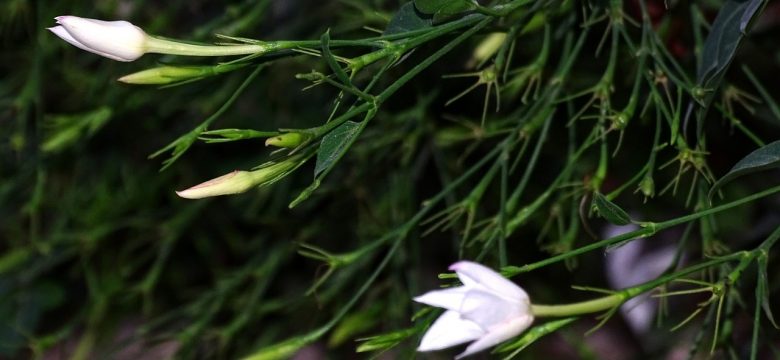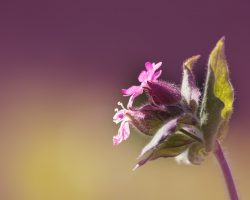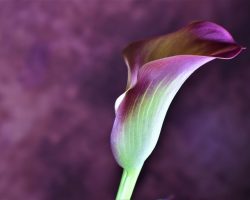The history and culture of jasmine is a fascinating subject that reveals the deep-rooted significance of this fragrant flower. Jasmine, with its delicate white petals and intoxicating scent, has been cherished for centuries across different cultures. In this article, we will delve into the origins of jasmine, its diverse uses, and its symbolism in art and literature.
Originating in the tropical regions of Asia, jasmine has a long and storied history. It has been cultivated and cherished in countries like India, China, and Egypt for thousands of years. Ancient legends and myths surround this beautiful flower, with tales of its divine origins and its association with love and beauty.
The uses of jasmine in various cultures are as diverse as the flower itself. In India, it is highly valued for its aromatic properties and is commonly used in perfumes, incense, and traditional Ayurvedic medicine. In China, jasmine tea is a popular beverage known for its soothing and calming effects. The flower also plays a significant role in religious ceremonies and rituals, symbolizing purity and spirituality.
Furthermore, jasmine has made its mark in art and literature throughout history. Its delicate beauty and intoxicating fragrance have inspired poets, painters, and writers to create masterpieces. In art, jasmine often symbolizes purity, love, and sensuality. In literature, it is often used as a metaphor for beauty, grace, and elegance.
As we explore the history and culture of jasmine, we will uncover the rich tapestry of traditions, festivals, and rituals associated with this beloved flower. From the jasmine festivals of Thailand to the jasmine-scented weddings in India, these celebrations showcase the deep cultural significance and adoration for jasmine.
In conclusion, jasmine is more than just a fragrant flower. It holds a rich history and cultural significance that spans across different parts of the world. From its origins in Asia to its diverse uses in various cultures, jasmine continues to captivate and inspire. Its symbolism in art and literature further highlights its timeless beauty. Join us as we embark on a journey to explore the enchanting world of jasmine.
Origins of Jasmine
The origins of jasmine can be traced back to ancient times, with its cultivation dating back thousands of years. This fragrant flower has captivated people across different cultures and has become a symbol of beauty and purity.
Jasmine is believed to have originated in the tropical regions of Asia, particularly in India and China. It was highly valued for its intoxicating scent and was often used in religious ceremonies and as an offering to the gods. The cultivation of jasmine spread to other parts of the world, including the Middle East, Europe, and Africa, where it became an integral part of their cultural traditions.
Throughout history, jasmine has been surrounded by legends and myths. In ancient Indian mythology, it is believed that the gods brought jasmine down to Earth as a gift to humanity. In Chinese folklore, jasmine is associated with love and romance, often depicted as a symbol of purity and grace.
The cultivation of jasmine requires specific conditions, such as warm temperatures and well-drained soil. It is mainly grown for its flowers, which are harvested in the early morning when their fragrance is at its peak. The flowers are then used to make essential oils, perfumes, teas, and other products.
Today, jasmine continues to be cherished for its exquisite beauty and enchanting fragrance. It is not only a popular flower in gardens but also holds a special place in the hearts of people around the world, symbolizing love, purity, and spirituality.
Uses in Different Cultures
Jasmine, with its intoxicating fragrance, has been revered in various cultures for centuries. Its aromatic properties have made it a popular ingredient in perfumes, teas, religious ceremonies, and even traditional medicine. Let’s delve into the diverse applications of jasmine in different cultures.
Perfumes: Jasmine’s sweet and floral scent has made it a prized ingredient in the perfume industry. Its delicate aroma adds a touch of elegance and sophistication to fragrances, making it a favorite choice for both men and women.
Teas: Jasmine tea is a beloved beverage in many cultures. The delicate white flowers are often mixed with green tea leaves, allowing their fragrance to infuse into the tea. Sipping on a cup of jasmine tea not only offers a soothing experience but also provides potential health benefits.
Religious ceremonies: In some cultures, jasmine is considered sacred and is used in religious ceremonies. The flowers are often used to adorn altars, temples, and statues, symbolizing purity, spirituality, and divine presence.
Traditional medicine: Jasmine has long been used in traditional medicine for its therapeutic properties. Its essential oil is believed to have calming effects, helping to alleviate stress and anxiety. It is also used in aromatherapy to promote relaxation and improve sleep quality.
Jasmine’s aromatic properties have transcended borders, enriching different cultures with its diverse applications. Whether it’s adding a touch of luxury to perfumes, enhancing the flavor of teas, symbolizing spirituality in religious ceremonies, or providing natural remedies in traditional medicine, jasmine continues to captivate and inspire people around the world.
Jasmine in Art and Literature
When it comes to art and literature, jasmine has been a source of inspiration for centuries. This fragrant flower has captivated the hearts of artists and writers alike, with its delicate beauty and intoxicating scent. Its representation in various artistic expressions has allowed for the exploration of its symbolism and the emotions it evokes.
In art, jasmine has often been depicted as a symbol of purity, beauty, and love. Its white petals and sweet fragrance have been used to convey feelings of innocence and romance. Artists have incorporated jasmine into their paintings, sculptures, and other visual artworks, seeking to capture its ethereal qualities.
Literature has also embraced jasmine as a powerful symbol. Poets and authors have used the flower to evoke a range of emotions, from longing and desire to hope and renewal. Jasmine has been featured in love poems, where its scent is likened to the intoxicating presence of a beloved. It has also been used as a metaphor for the fleeting nature of beauty and the passage of time.
Through art and literature, jasmine has become more than just a flower. It has become a symbol of beauty, love, and the ephemeral nature of life. Exploring its representation in these creative forms allows us to delve deeper into the human experience and the emotions that jasmine evokes.
Jasmine Festivals and Traditions
Immerse yourself in the enchanting world of jasmine festivals and traditions that take place in various parts of the globe. These vibrant celebrations are a testament to the deep-rooted cultural significance of the beloved flower.
In India, the Jasmine Festival, also known as Madurai Malli Festival, is a grand affair held in the city of Madurai. The streets come alive with colorful decorations and the air is filled with the sweet scent of jasmine. Locals adorn their hair with jasmine garlands and participate in traditional dances and music performances.
The Jasmine Festival in Tunisia, known as the Festival of Jasmine, is a celebration of the country’s rich jasmine production. The festival showcases the various uses of jasmine, from perfumes and oils to culinary delights. Visitors can witness traditional jasmine harvesting techniques and indulge in the aromatic delicacies.
In China, the Jasmine Flower Festival is celebrated in the city of Guangzhou. The festival features elaborate parades, dance performances, and art exhibitions, all centered around the jasmine flower. The city is adorned with stunning jasmine decorations, creating a magical atmosphere.
These are just a few examples of the many jasmine festivals and traditions that exist worldwide. Each celebration offers a unique insight into the cultural significance and beauty of jasmine. Whether it’s through rituals, dances, or artistic expressions, these festivals bring people together to honor and celebrate the beloved flower.
Frequently Asked Questions
- What are the different types of jasmine?
There are several types of jasmine, including Jasminum officinale (common jasmine), Jasminum sambac (Arabian jasmine), and Jasminum grandiflorum (Spanish jasmine). Each type has its own unique characteristics and fragrance.
- How is jasmine used in perfumes?
Jasmine is a popular ingredient in perfumes due to its sweet and floral scent. It is often used as a middle note in fragrance compositions and adds a touch of elegance and sensuality to perfumes.
- Can jasmine tea provide health benefits?
Yes, jasmine tea is known for its potential health benefits. It is believed to have antioxidant properties, promote relaxation, aid digestion, and even boost the immune system. However, it’s important to consult with a healthcare professional for personalized advice.
- What is the significance of jasmine in religious ceremonies?
Jasmine is considered sacred in many religious traditions. It is often used in ceremonies and rituals as a symbol of purity, love, and divinity. The fragrance of jasmine is believed to attract positive energy and create a peaceful atmosphere.
- Are there any jasmine festivals celebrated worldwide?
Yes, jasmine festivals are celebrated in various parts of the world. For example, the Jasmine Festival in China showcases vibrant displays of jasmine flowers and includes cultural performances. In India, the Madurai Jasmine Festival honors the flower with music, dance, and a grand procession.





